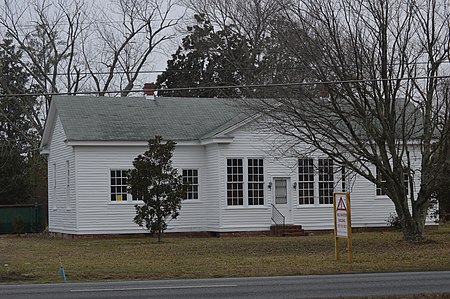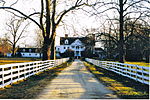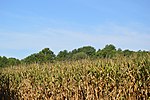Woodville School (Ordinary, Virginia)
1923 establishments in VirginiaGloucester County, Virginia geography stubsMiddle Peninsula Registered Historic Place stubsNational Register of Historic Places in Gloucester County, VirginiaRosenwald schools in Virginia ... and 3 more
School buildings completed in 1923School buildings on the National Register of Historic Places in VirginiaSchools in Gloucester County, Virginia

Woodville School is a historic Rosenwald school building located at Ordinary, Gloucester County, Virginia. It was built in 1923, and is a high one-story, five-bay, symmetrical frame structure. It measures 63 feet, 6 inches, by 28 feet, 6 inches, and sheathed in white painted clapboard. It was converted to residential use after 1942. Also on the property are a contributing guesthouse or additional school building and a small shed.It was added to the National Register of Historic Places in 2004.
Excerpt from the Wikipedia article Woodville School (Ordinary, Virginia) (License: CC BY-SA 3.0, Authors, Images).Woodville School (Ordinary, Virginia)
George Washington Memorial Highway,
Geographical coordinates (GPS) Address Nearby Places Show on map
Geographical coordinates (GPS)
| Latitude | Longitude |
|---|---|
| N 37.324722222222 ° | E -76.515277777778 ° |
Address
George Washington Memorial Highway 4287
23072
Virginia, United States
Open on Google Maps







